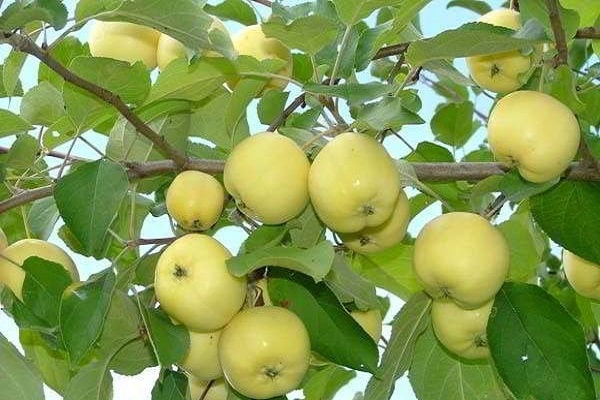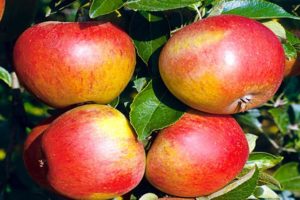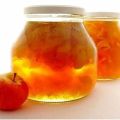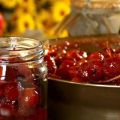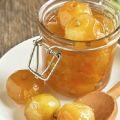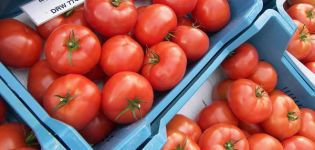Description and characteristics of ranetok apple varieties, ripening dates and crop care
On many summer cottages and household plots, varieties of small-fruited apple trees - ranetki grow. This variety is used as a preparation for winter jam, and is also used fresh, despite the small size of the fruit. Ranetki were bred by breeders by crossing the Sibirka variety with common European varieties.
Content
- 1 Benefits and descriptions of the species
- 2 Growing areas
- 3 Tree height and crown width
- 4 Taste qualities of apples
- 5 Frost resistance
- 6 Disease and pest resistance
- 7 Tree life
- 8 Varieties and their characteristics
- 9 Optimal care for good growth and harvest
- 10 Planting and care conditions
- 11 Ripening and fruiting period
Benefits and descriptions of the species
The main characteristic feature of the ranetki is a small fruit weight, not exceeding 15 g. Small fruits fully ripen in early September and have a pronounced sourness in taste. The ranetki contains tens of times more bioactive components in comparison with classic varieties.
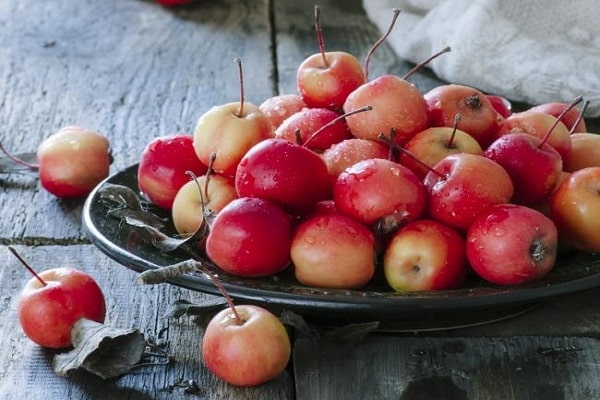
Any variety of ranetki is unpretentious in care and grows almost everywhere, while having several features and advantages. The fruit shares some of the positive properties of the Siberian apple tree, including resistance to cold weather, early ripening and stable yields.
Thanks to the listed qualities, ranetki are actively used by breeders for crossing with other varieties.
Growing areas
In most European regions, gardeners prefer trees with larger, juicier apples. Ranetki with a pronounced sour taste can often be found in Siberia. Saplings are able to grow and bear fruit in any climatic zone, with the exception of the Far North, where low temperatures do not allow fruits to ripen fully.
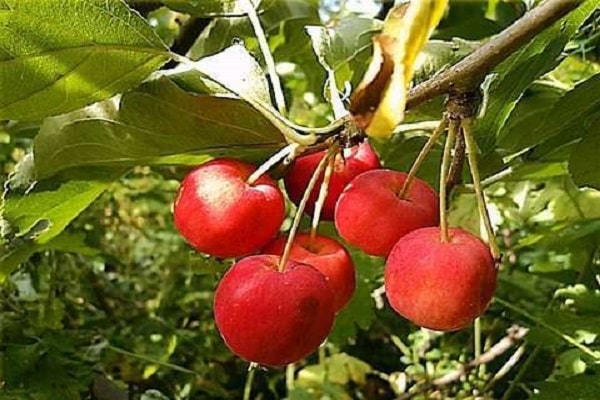
Tree height and crown width
For proper growth, one tree needs to allocate a plot of 5 x 5 m. Large space is required due to the spreading crown, the width of which is 1-4 m, depending on the specific type of apple tree. Saplings reach a height of 4-5 m.
Taste qualities of apples
The taste of the fruit, first of all, depends on the characteristics of the cultivated variety. Also, the taste characteristics are influenced by the environment, the care of the seedlings, the fertilizing used and the climate. Most of the common varieties have a pronounced sweet and sour taste and insignificant astringency. Some varieties produce juicy apples with a distinct sweetness.
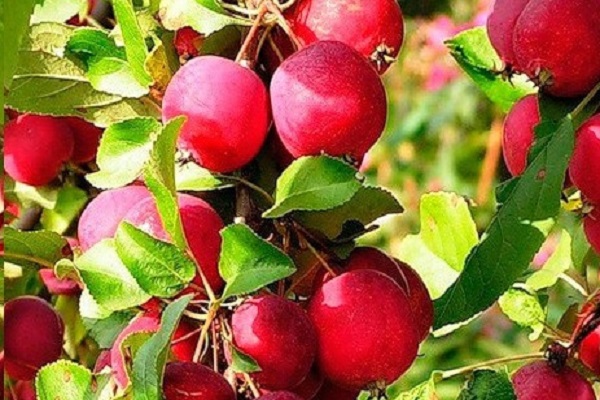
Frost resistance
The ranetki bred by breeders retained some of the positive characteristics of the Siberian apple tree.One of the properties is the ability to endure cold winters without a trace at any temperature. The duration and degree of exposure to cold, as well as the amount of precipitation do not affect fruiting.
The results of breeding experiments confirm that seedlings do not die at temperatures down to -47 degrees. Frost does not spoil the taste and juiciness of the crop.
The only measure to protect green spaces that may be required during the winter is wrapping the trunk with spruce branches and rags. This will protect the trunk circle from frostbite and rodent attacks.

Disease and pest resistance
Ranetki are especially appreciated by novice gardeners for their resistance to infections and harmful insects. As an additional protection against negative effects, it is recommended to carry out preventive measures in order to increase the immunity of trees.
Primary spraying with a urea solution is required before sap flow begins. The procedure scares away pests that remain under the bark for the winter. With the onset of summer, ranetki need to work with a Bordeaux mixture. Cracked places on the trunk are covered with a solution of copper sulfate or garden pitch. During active fruiting, treatments should not be carried out so that the substances do not get onto the crop.
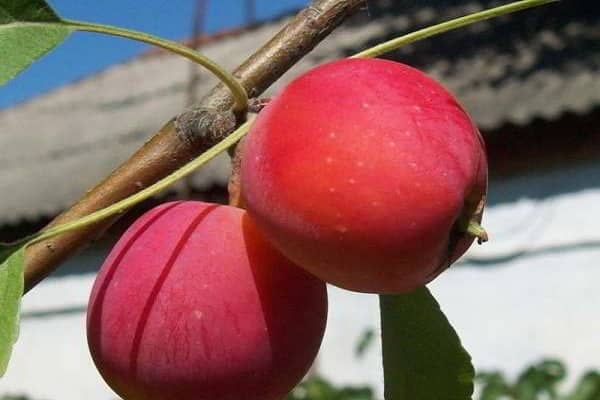
Tree life
Varietals of ranetoks with periodic fruiting begin to bring their first harvest a year after planting the seedlings. Provided regular proper care, optimal climatic conditions and the absence of negative external influences, the life of a tree is several decades. Throughout the entire period of development, the plantation bears fruit without losing the taste characteristics of small apples.
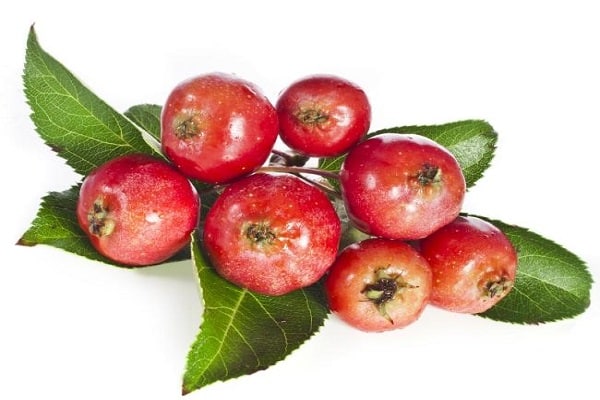
Varieties and their characteristics
Among gardeners, several varieties of ranetki have become widespread, which differ from each other in a number of characteristics. Each variety has the following individual qualities:
- taste;
- size and juiciness of fruits;
- features of growing and care;
- appearance, color;
- crown width and height (undersized species and trees up to 5 m high are distinguished).
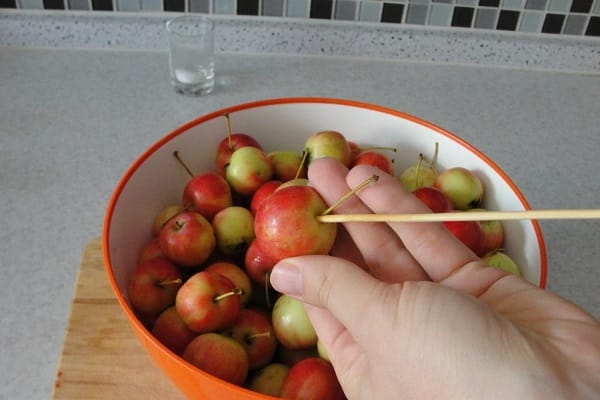
Dobrynya
The ranetok variety Dobrynya became widespread due to its resistance to frost and intensive growth. The variety begins to bear fruit later than the other varieties - not earlier than 4 years after transplanting into open ground. Dobrynya easily endures dry conditions and is immune to scab. One tree manages to get about 35-50 kg of yield.
The fruits have a classic sweet and sour aftertaste with a pronounced tart aftertaste. The harvest ripens by the beginning of autumn and can be stored without loss of taste until February. Apple fruits can be frozen as they will retain their juiciness after thawing.

Long
The main characteristics of the Dolgo variety are the sweet taste of the fruit with a slight sourness in the aftertaste, fruiting 3 years after planting, the possibility of using the crop as a raw material for harvesting jam or juice. A variety of ranetki has average frost resistance. The harvest ripens by the beginning of autumn and is stored for a month after harvest. One tree bears about 25 kg of fruit.
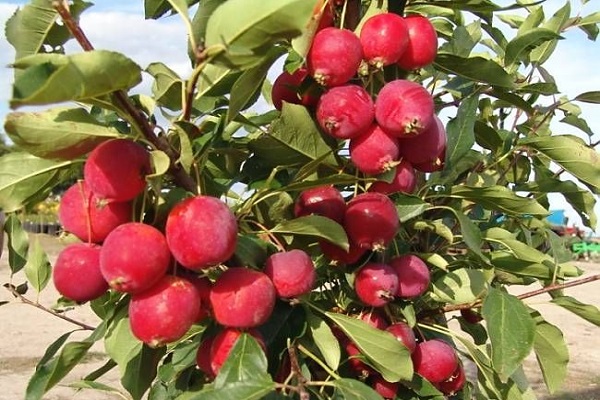
Gold
Ranetka Gold is one of the most winter-hardy varieties. The trees reach a height of 7 m and are characterized by intense fruiting. The first harvest is obtained after 3-4 years of growth. Each tree can grow up to 50 kg of apples weighing 10-15 g. Depending on the surrounding conditions, the harvest ripens from mid-summer to September.
The fruits have a yellow skin and firm pulp. The taste of ranetok is sour and tart. Variety Gold is not suitable for long-term storage.
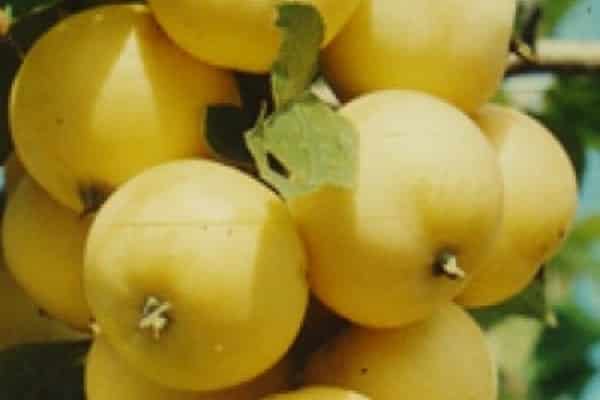
Red
Due to the short shelf life, Ranetka Red is used for cooking mashed potatoes, compote and juices. You can harvest from trees of this type the next year after transplanting into open soil.
The fruits ripen at the end of the summer season. Stable fruiting allows for regular harvesting. Outwardly, Ranetka Red resembles small balls of saturated color. The pulp is juicy and creamy, the taste is sour with pronounced astringency.
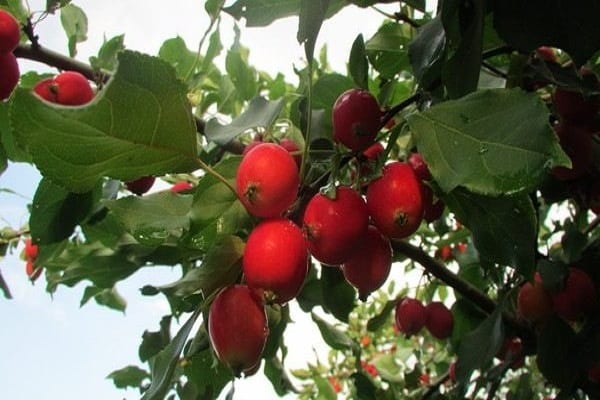
Laletino
Laletino trees have a compact size and a sparse rounded crown. The advantage of the variety is the early ripening of the crop - the first fruits appear 2-3 years after planting. Outwardly, the fruits look like small ribbed apples with a reddish peel. The flesh is light pink in color and has a dense structure and juiciness.
The shelf life of the Laletino variety does not exceed 2 months, so they should be consumed fresh. Among experienced gardeners, the variety is considered one of the most delicious.
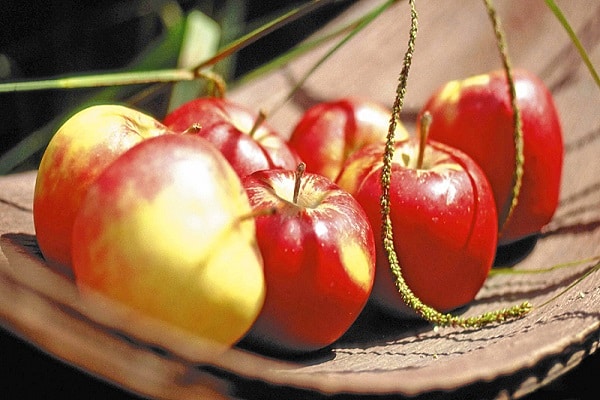
Raspberry
Small apples of the Raspberry variety grow on trees 3 years after planting. The variety is famous for its stable and large harvest, which is harvested in early autumn.
The mass of the fruits is about 10 g, and outwardly they look like a plum. The pulp is juicy and tender with a sweet and sour aftertaste. One of the key advantages of the variety is its ability to long-term storage - Raspberry ranetka does not deteriorate until spring.

Purple
Among the wide variety of ranetka, Purpurovaya is considered the most frost-resistant variety. This species brings a bountiful harvest after 2-3 years from the moment of planting. Fruits are harvested in early September. Up to 50 kg of apples can be harvested from each tree.
Fruit weight does not exceed 10 g, the shape is slightly flattened. The color of the peel is bright red, uniform. The pulp has a standard sourish tart taste. Apples are most often used for processing, since the shelf life is about 2 months.
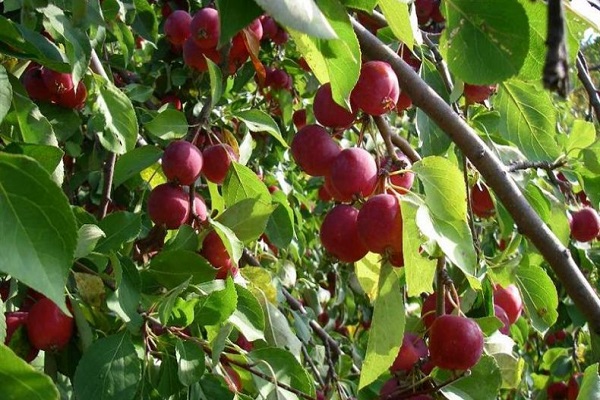
Siberian
The fruits of the Sibiryachka variety begin to grow after 3-4 years of tree development. Ranetka of this type does not differ in large harvest, but in quality it is not inferior to the rest. The Siberian woman is resistant to infectious diseases and is practically not exposed to scab.
Spherical fruits weigh up to 20 g. The peel can be yellow or with a red tint. The pulp is juicy with a weak sour taste. In case of insufficient watering, a slight bitterness may taste. The crop ripens by the end of summer and is stored for three months in a cool room.
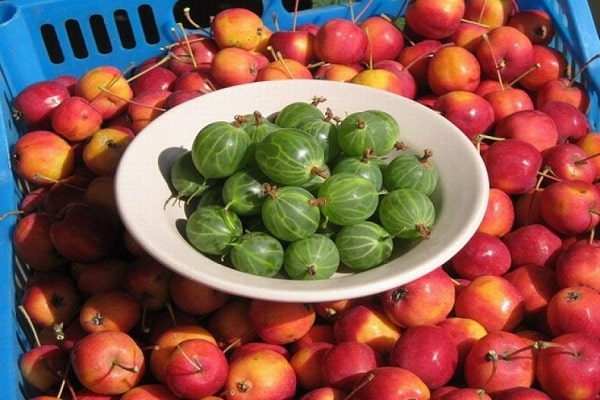
Lantern
Lantern trees have a pyramidal shape. Active fruiting begins 3 years after planting. The harvest ripens by the beginning of autumn. In one season, up to 20 kg of fruits grow, each of which weighs no more than 15 g.
Ranetki are distinguished by an oval shape, smooth surface and a bright crimson peel. During storage, the hue becomes more saturated. The taste of the fruit is sweet and sour, the aroma is practically absent.
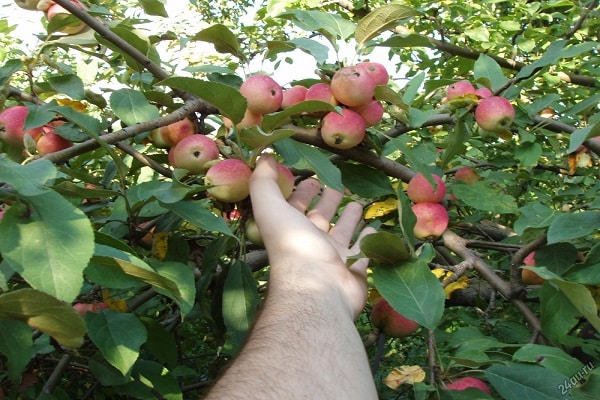
Amber
Ranetka Amber has a long lifespan and has been actively bearing fruit for 3 decades. Tall trees with dense vegetation give a stable harvest. Fruit weight does not exceed 10 g. Apples are yellow, ball-shaped and smooth on the surface. Due to the standard flavor characteristics, the crop is more often used as raw material for making jam and juices.
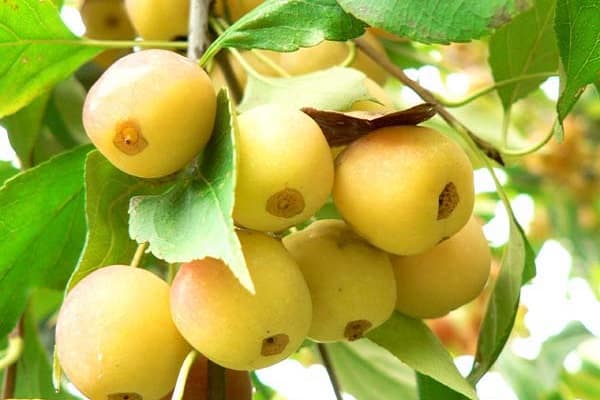
Honey
Tall trees of Honey ranetka with a rounded crown bring a stable and large harvest that is harvested at the end of summer. Ripe ranetki fall off the branches on their own, which simplifies the harvesting process.
In comparison with other varieties, the fruits have a greater weight, reaching 40 g.The pronounced sweet taste with honey notes allows the apples to be used in the preparation of various dishes or to be consumed fresh.
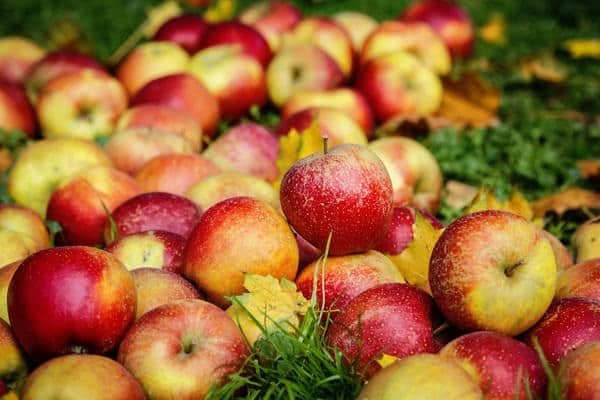
Dwarf
Despite the compactness of the trees, the Dwarf ranetka bears fruit with no less intensity compared to other varieties. The trees bear bright red fruits with a firm structure and juicy pulp.
The disadvantages of the variety include a short life span (2 times less than that of other varieties), as well as the need for a better garter due to the many fruits ripening on thin and fragile branches.

Columnar
The variety belongs to the mid-season category and bears harvest in early autumn. The small juicy fruits have a rich red color and a sour taste. The shape of the ranette is spherical with pronounced ribbing.
Columnar ranetka requires careful maintenance, including regular watering and top dressing. Subject to the rules of care, the yield reaches 180 centners per hectare. Throughout the year, the trees bear fruit evenly, without a clearly expressed periodicity.
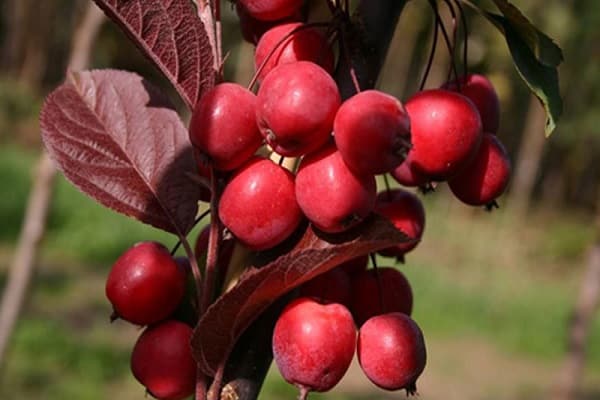
Optimal care for good growth and harvest
To get a large harvest of ranetki, you must adhere to some rules for caring for seedlings. Specifically, trees require:
- Regular watering. The soil in the trunk circle must be constantly moistened.
- Fertilization. Top dressing provides intensive growth and affects the abundance of the crop.
- Trimming the crown. With heavily thickened vegetation, the amount of yield may decrease.
- Protection from pests and diseases. Spraying plantings with insecticidal and fungicidal preparations allows maintaining the quality of the crop.
- Garter. So that seedlings with fragile and thin trunks do not break due to rainfall or wind, it is necessary to securely fix them on the site.
In order to timely detect problems in the development of trees, it is recommended to constantly inspect the plantings... If traces of pests or diseases are noticed on the ranetki, it is required to process the seedlings and create favorable environmental conditions.

Planting and care conditions
It is recommended to transfer seedlings of ranetok to the open ground before the start of sap flow in March or autumn. For trees, a pit with humus is dug in advance and a post is inserted for tying.
It is necessary to place the seedling in the hole so that the top of the root system remains above the surface of the soil. In order for the roots to firmly fix in the soil, immediately after sprinkling with earth, abundant watering is required.
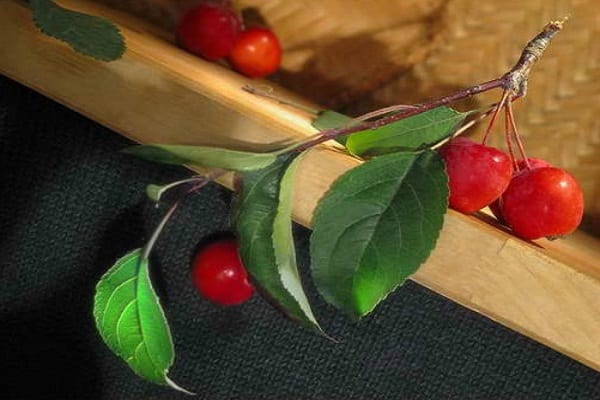
Crown formation
After the second year, the formation of the crown of the trees is required. Pruning is carried out after the leaves fall or in early March before the onset of active vegetation. It is necessary to remove dried and old branches from the crown.
It is also recommended to cut off young shoots directed at an acute angle to the trunk, which will protect the branches from breaking under the weight of apples. In the absence of roof formation, the tree will yield a small crop.
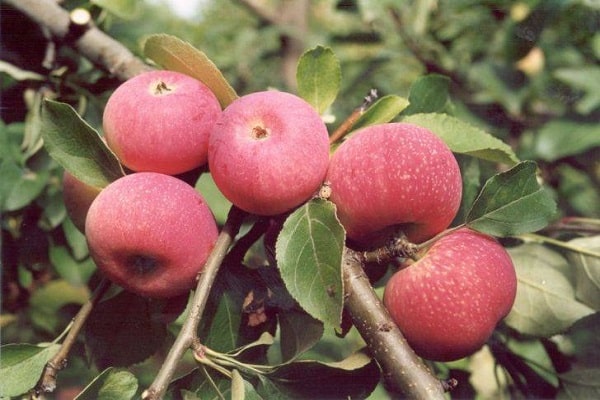
Reproduction
It is possible to increase the number of trees on the site in various ways. The easiest way is to plant seeds in open ground and wait for entrances. Due to its natural vitality, the seedling grows with minimal maintenance.
Reproduction can also be done by grafting. To do this, some of the branches of the ranetka are grafted onto other apple trees or wild animals. In this case, you will not need to look for a new place for planting seedlings, while increasing the amount of harvest.
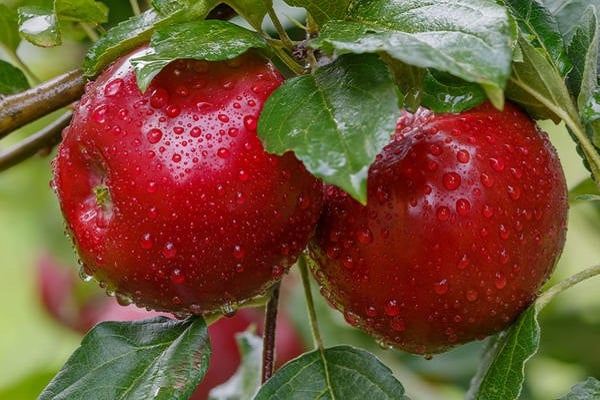
Ripening and fruiting period
Most of the ranetka varieties begin to bear fruit in the second year of the tree's development. Flowering occurs in late spring or early summer. The exact timing depends on the characteristics of the variety and climatic conditions. Flowering duration can be up to 10 days.
Trees begin to bear fruit actively with regular maintenance and suitable weather.There are varieties that bear fruit periodically - the harvest of such trees ripens every year.
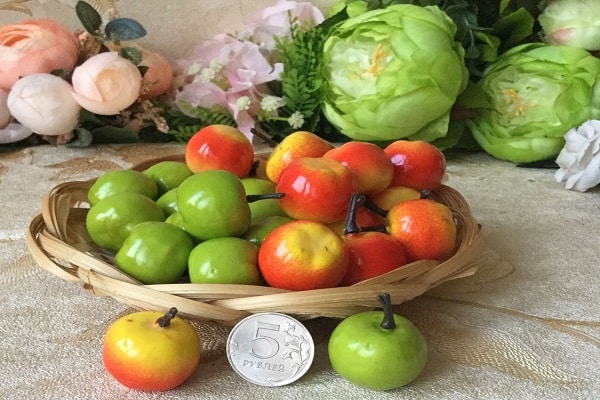
When the fruits ripen
Common types of ranetki produce crops in late summer or early fall. Late-ripening varieties fully ripen in October. In order to always have a fresh harvest, experienced gardeners plant different varieties on the plots, which differ in ripening periods and storage duration.
The yield from each tree varies from 20 to 70 kg, depending on the variety. Winter cold does not affect the fruiting of most types of ranetki.
